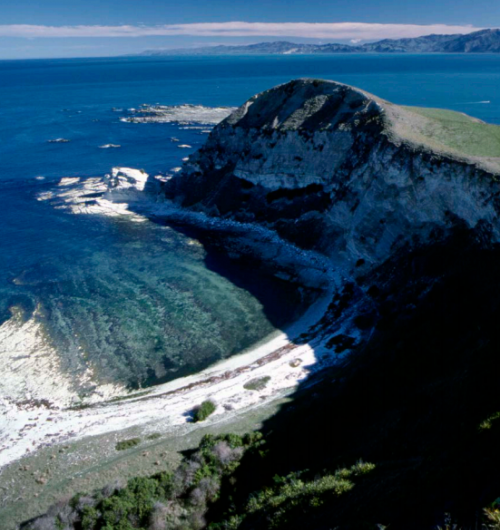September 30, 2014 report
Researchers find possible explanation of early Polynesian migration

(Phys.org) —Two teams of researchers describe new developments in understanding early Polynesian migration. One group suggests early Polynesians may have been able to make their way southwest to New Zealand and northeast to Easter Island because of a temporary shift in wind patterns. Another group describes a sophisticated voyaging canoe found recently in New Zealand that appears to have Polynesian origins. Both groups have published papers describing their research in Proceedings of the National Academy of Sciences.
Scientists agree that early Polynesians were able to migrate across vast stretches of ocean in canoes, what has been a cause of curiosity, however, was how they managed to make their way to places that would have entailed sailing into the wind. In one of the studies, a team from Australia suggests that for a small window of time, the prevailing winds in the area around Polynesia would have shifted, allowing relatively easy passage to places that before were unreachable. They looked at ice cores, tree rings, stalagmites, and even sediments from across the region and used what they found to create a computer model to mimic conditions from the 800s to the 1600s. When running the simulation, the researchers found evidence of a change in prevailing winds for short, decades-long periods. During some of these periods, the prevailing winds would have shifted east, allowing migration to Easter Island, during others the winds would have shifted southwest, allowing travel to New Zealand. After 1300, the simulations show, the prevailing winds shifted back to their current direction, preventing further migration to such places.
Researchers in the other study describe wood fragments from a canoe found on a shore in New Zealand (high winds removed the sand that was covering it)—they've dated its last use to approximately 1400. They've also found the wood it was made from is native to New Zealand, but not Polynesia. But, they've also found an etched sea turtle image on it, a creature not normally found in New Zealand art. Sea turtles are featured prominently in Polynesia art, however, and the boat is also similar in design to another boat from the same time period found in the Society Islands, suggesting a Polynesian connection. The researchers believe the boat was approximately 20 meters long and was either double-hulled or had an outrigger, which would have allowed for the addition of a shelter.
Taken together the papers suggest that early Polynesians built sophisticated canoes and used them to sail to new places in the Pacific when prevailing winds shifted allowing them to do so.
More information: 1. An early sophisticated East Polynesian voyaging canoe discovered on New Zealand's coast, Dilys A. Johns, PNAS, DOI: 10.1073/pnas.1408491111
Abstract
The colonization of the islands of East Polynesia was a remarkable episode in the history of human migration and seafaring. We report on an ocean-sailing canoe dating from close to that time. A large section of a complex composite canoe was discovered recently at Anaweka on the New Zealand coast. The canoe dates to approximately A.D. 1400 and was contemporary with continuing interisland voyaging. It was built in New Zealand as an early adaptation to a new environment, and a sea turtle carved on its hull makes symbolic connections with wider Polynesian culture and art. We describe the find and identify and radiocarbon date the construction materials. We present a reconstruction of the whole canoe and compare it to another early canoe previously discovered in the Society Islands.
2. Climate windows for Polynesian voyaging to New Zealand, Ian D. Goodwin, PNASdoi: 10.1073/pnas.1408918111
Abstract
Debate about initial human migration across the immense area of East Polynesia has focused upon seafaring technology, both of navigation and canoe capabilities, while temporal variation in sailing conditions, notably through climate change, has received less attention. One model of Polynesian voyaging observes that as tradewind easterlies are currently dominant in the central Pacific, prehistoric colonization canoes voyaging eastward to and through central East Polynesia (CEP: Society, Tuamotu, Marquesas, Gambier, Southern Cook, and Austral Islands) and to Easter Island probably had a windward capacity. Similar arguments have been applied to voyaging from CEP to New Zealand against prevailing westerlies. An alternative view is that migration required reliable off-wind sailing routes. We investigate the marine climate and potential voyaging routes during the Medieval Climate Anomaly (MCA), A.D. 800–1300, when the initial colonization of CEP and New Zealand occurred. Paleoclimate data assimilation is used to reconstruct Pacific sea level pressure and wind field patterns at bidecadal resolution during the MCA. We argue here that changing wind field patterns associated with the MCA provided conditions in which voyaging to and from the most isolated East Polynesian islands, New Zealand, and Easter Island was readily possible by off-wind sailing. The intensification and poleward expansion of the Pacific subtropical anticyclone culminating in A.D. 1140–1260 opened an anomalous climate window for off-wind sailing routes to New Zealand from the Southern Austral Islands, the Southern Cook Islands, and Tonga/Fiji Islands.
Journal information: Proceedings of the National Academy of Sciences
© 2014 Phys.org

















